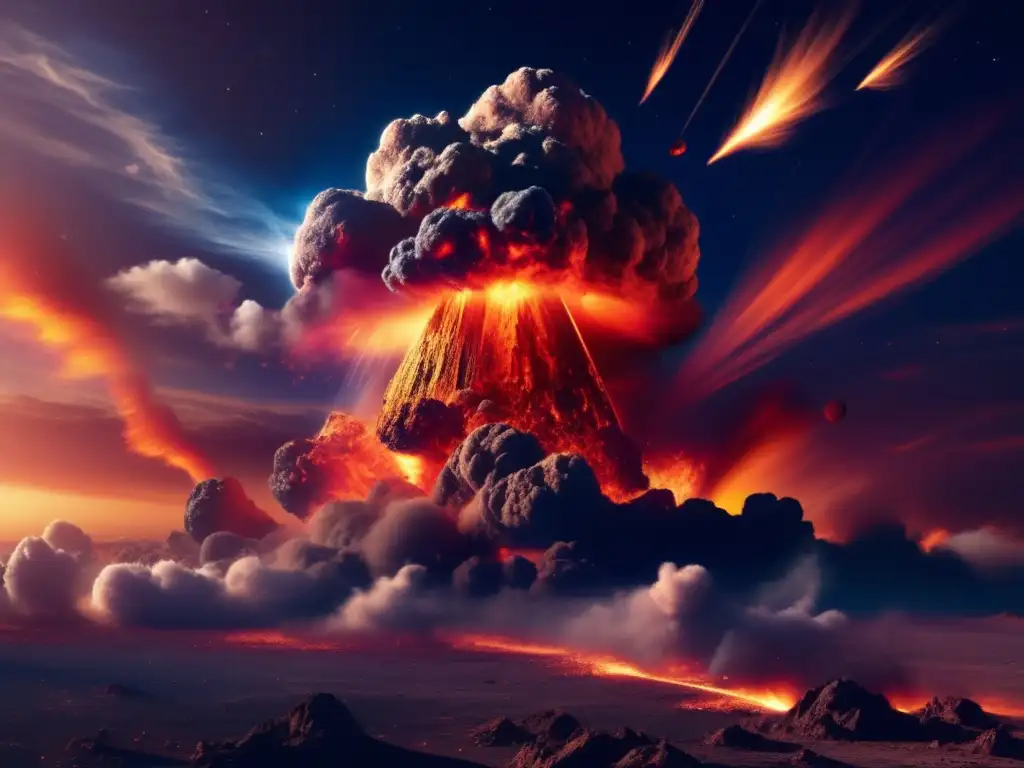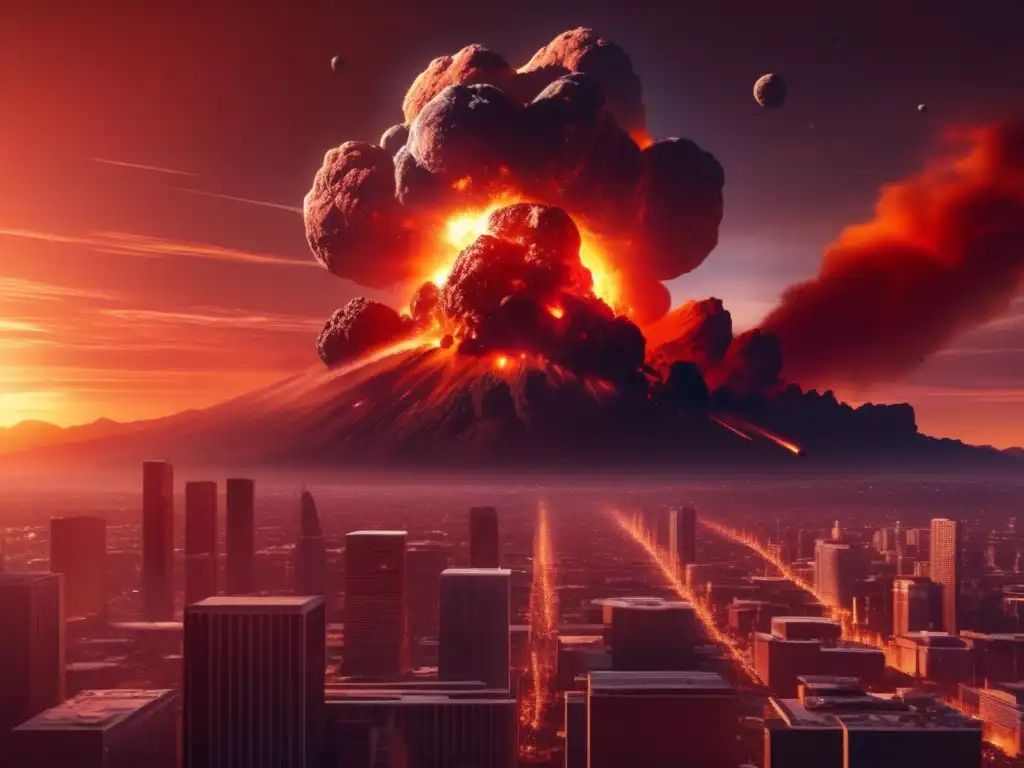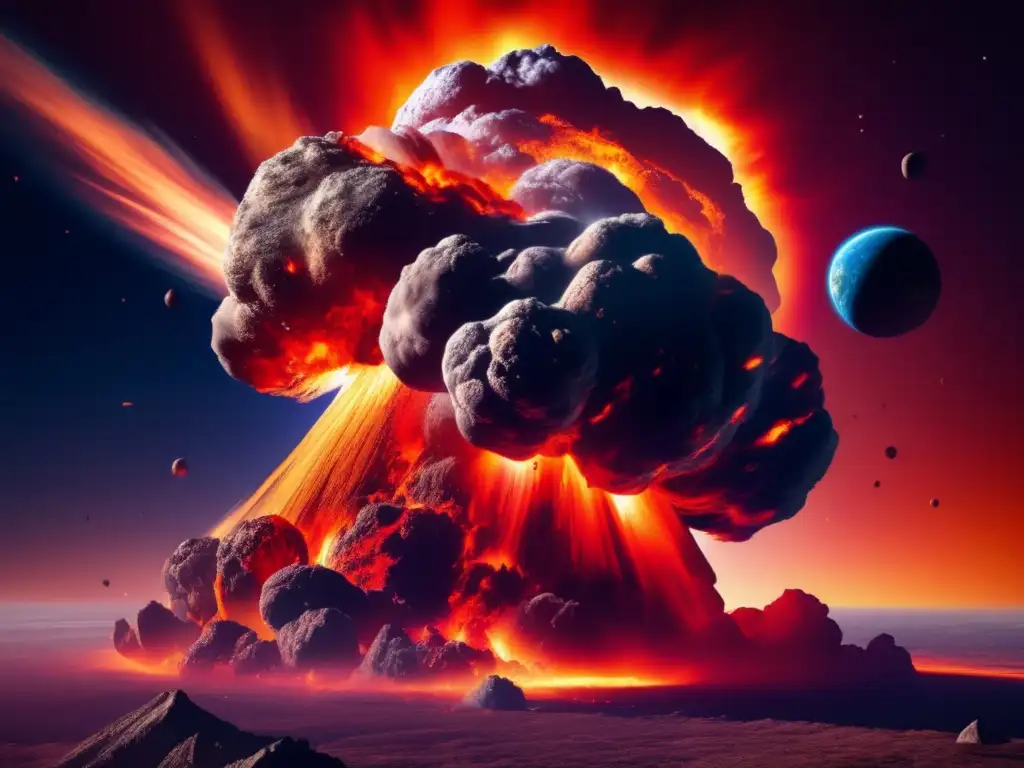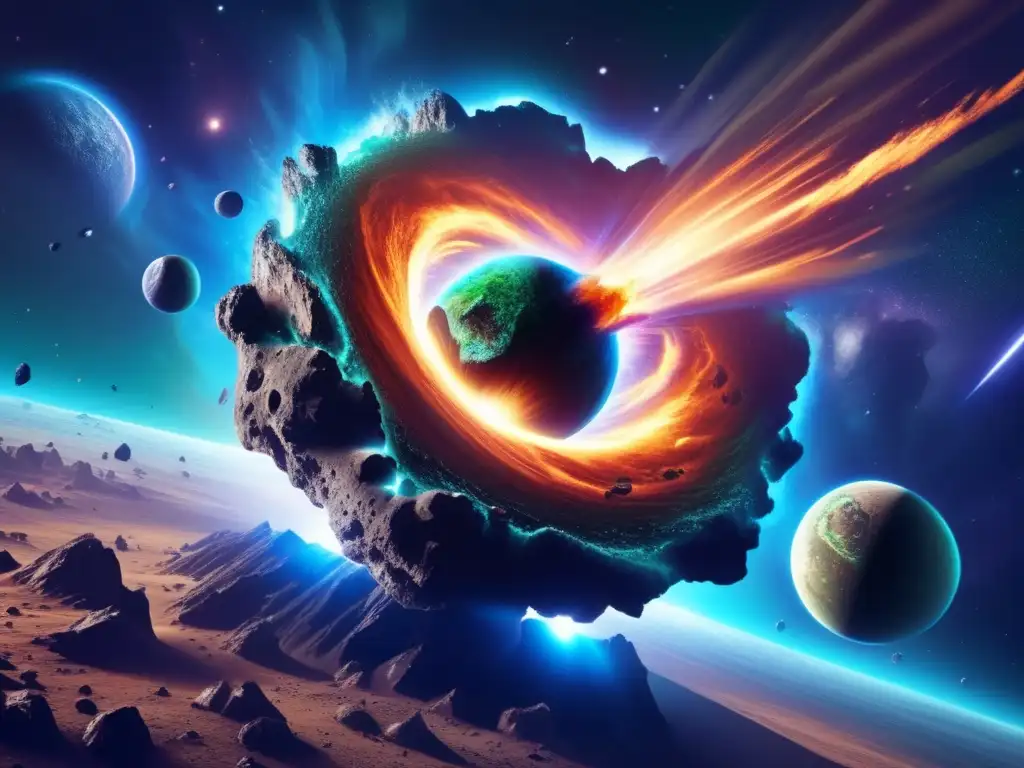The Sky On Fire: The Atmospheric Effects Of Asteroid Impacts

Introduction
Asteroids are fascinating celestial objects that have captured human imagination for centuries. Their collisions with the Earth have had a profound impact on our planet's history and evolution. Asteroid impacts have caused mass extinctions, including the famous event that led to the demise of the dinosaurs. But not all asteroid impacts are catastrophic. Some create beautiful meteor showers, while others have atmospheric effects that are interesting to explore.
Impact-induced Atmospheric Effects

A Shock Wave in the Atmosphere
The energy released by an asteroid impact produces a shock wave that travels through the atmosphere at supersonic speeds. This shock wave compresses the air molecules in its path, causing a sudden increase in temperature and pressure. The resulting blast wave can devastate everything in its path, as seen in the Tunguska event of 1908, where a meteoroid exploded above Siberia, flattening trees over an area of 2,000 square kilometers.
Heat and Light
When an asteroid plunges through the Earth's atmosphere, it creates immense friction due to air resistance. This friction heats up the asteroid, causing it to glow brightly. The result is a spectacular fireball that illuminates the sky for miles around. The light can be so intense that it can temporarily blind people who look directly at the explosion. The heat generated by the fireball can also ignite fires on the ground below, as seen during the Chelyabinsk meteor event of 2013.
Auroras
An asteroid impact can also produce bright auroras in the sky. When the asteroid collides with the Earth's atmosphere, it ionizes the gases in the upper atmosphere, which results in the emission of colorful lights. These lights are commonly known as auroras, and they can be seen in polar regions. One example of an asteroid impact that produced stunning auroras was the Chelyabinsk meteor event of 2013.
The Effect of Asteroid Impacts on Climate

Global Cooling
Large asteroid impacts can have a significant impact on the Earth's climate. Upon impact, the asteroid releases vast amounts of dust and debris into the atmosphere, blocking out sunlight. This leads to a cooling effect, as less solar radiation reaches the Earth's surface. The result is a drop in temperature that can last for several years. One of the most famous examples of this was the Chicxulub impact, which caused the extinction of the dinosaurs.
Greenhouse Gases
Asteroid impacts can also release large amounts of greenhouse gases, such as carbon dioxide and methane, into the atmosphere. These gases trap heat and can lead to a warming effect. This warming effect can last for many thousands of years and may even contribute to the onset of global warming. Scientists believe that the massive Siberian Traps volcanic eruptions, which occurred around the same time as the Permian extinction, were triggered by a large asteroid impact. The eruptions released massive amounts of greenhouse gases, contributing to the extinction of over 95% of marine species.
Frequently Asked Questions

-
Can an asteroid impact cause a nuclear winter?
Yes, a large asteroid impact can cause a nuclear winter-like effect, where the Earth's temperature drops significantly due to the massive amount of debris thrown up into the atmosphere.
-
Could an asteroid impact trigger a supervolcano eruption?
Yes, some scientists believe that the massive Siberian Traps eruptions were triggered by a large asteroid impact.
-
What is the largest impact crater on Earth?
The Vredefort Dome in South Africa is the largest known impact structure on Earth, with an estimated diameter of 300 kilometers.
-
Can an asteroid impact cause an earthquake?
Yes, a large asteroid impact can cause massive seismic waves that can trigger earthquakes and tsunamis.
-
What can we do to prepare for an asteroid impact?
Scientists are currently developing methods to prevent or mitigate the effects of asteroid impacts. These include asteroid deflection techniques and early warning systems.
Conclusion
Asteroid impacts have had a significant impact on our planet's history and evolution. From causing mass extinctions to creating beautiful auroras, the effects of asteroid impacts are fascinating to explore. By understanding the atmospheric effects of asteroid impacts, we can gain a greater appreciation for the complexity of our planet's natural systems. As we continue to study asteroids and their impacts, we can better prepare for potential future impacts and learn more about the universe around us.
We hope you enjoyed this article on the atmospheric effects of asteroid impacts. Please feel free to share your thoughts in the comments below and join our community at Asteroid Realm to learn more about these fascinating celestial objects.
Additional Resources

- NASA Planetary Defense - Impact Effects
- Atmospheric effects of asteroid impacts at regional to global scales: A review
- The Chicxulub Impact and Mass Extinction
 Eye Of The Storm: Surviving An Asteroid Strike
Eye Of The Storm: Surviving An Asteroid Strike Deep Impact: The Physics Of Asteroid Collisions
Deep Impact: The Physics Of Asteroid Collisions Asteroid Strikes And Climate: Long-term Consequences
Asteroid Strikes And Climate: Long-term ConsequencesIf you want to discover more articles similar to The Sky On Fire: The Atmospheric Effects Of Asteroid Impacts, you can visit the Asteroid Impacts category.
Leave a Reply

Articulos relacionados: